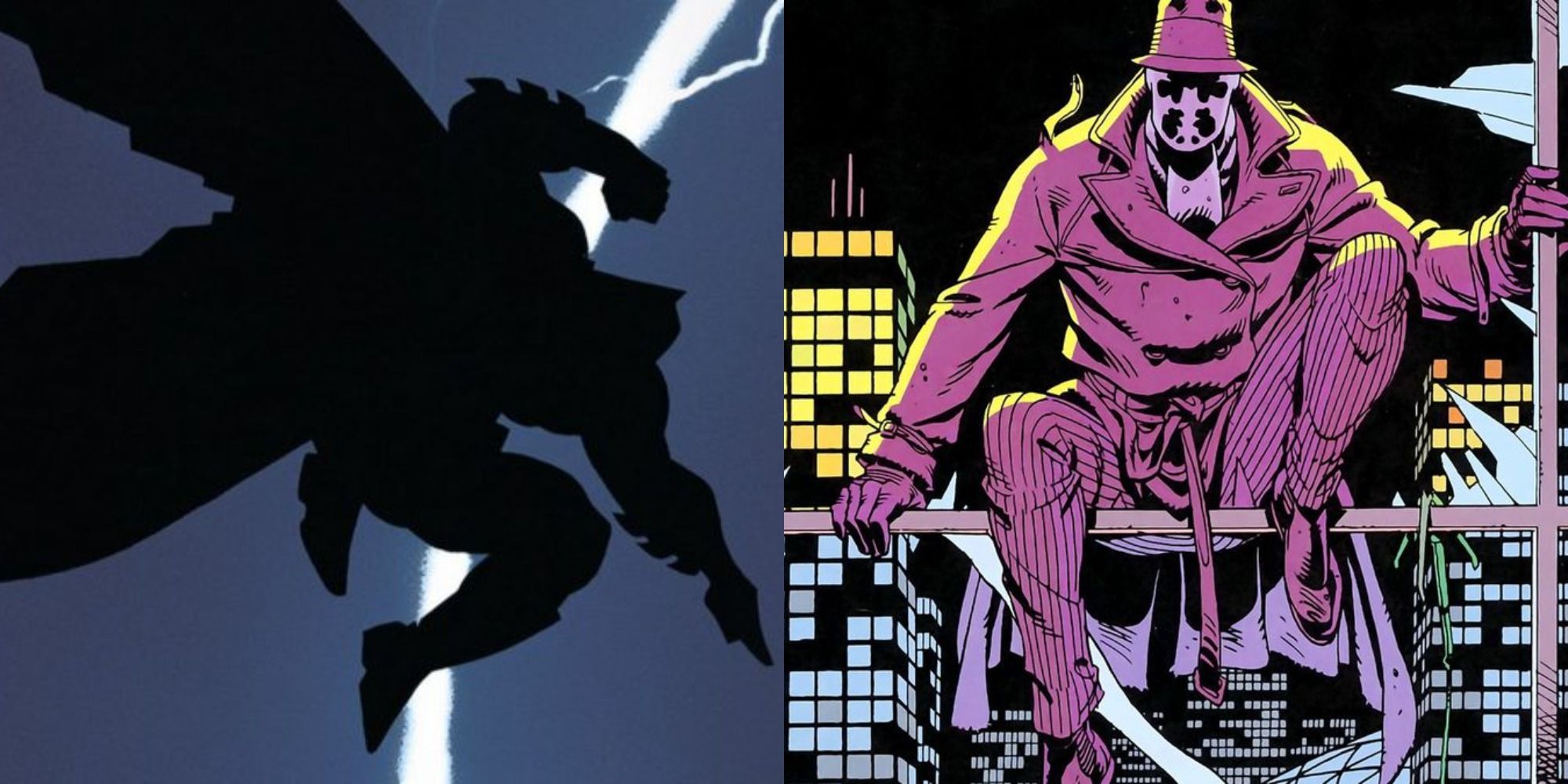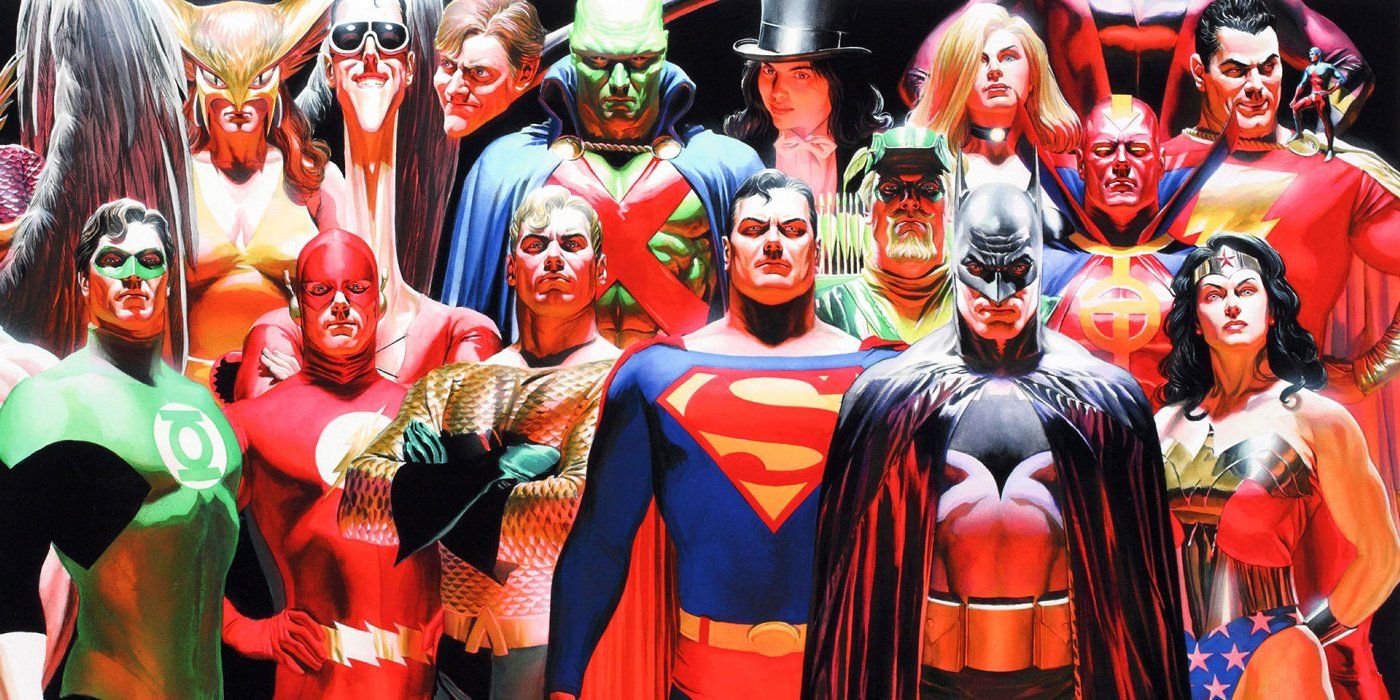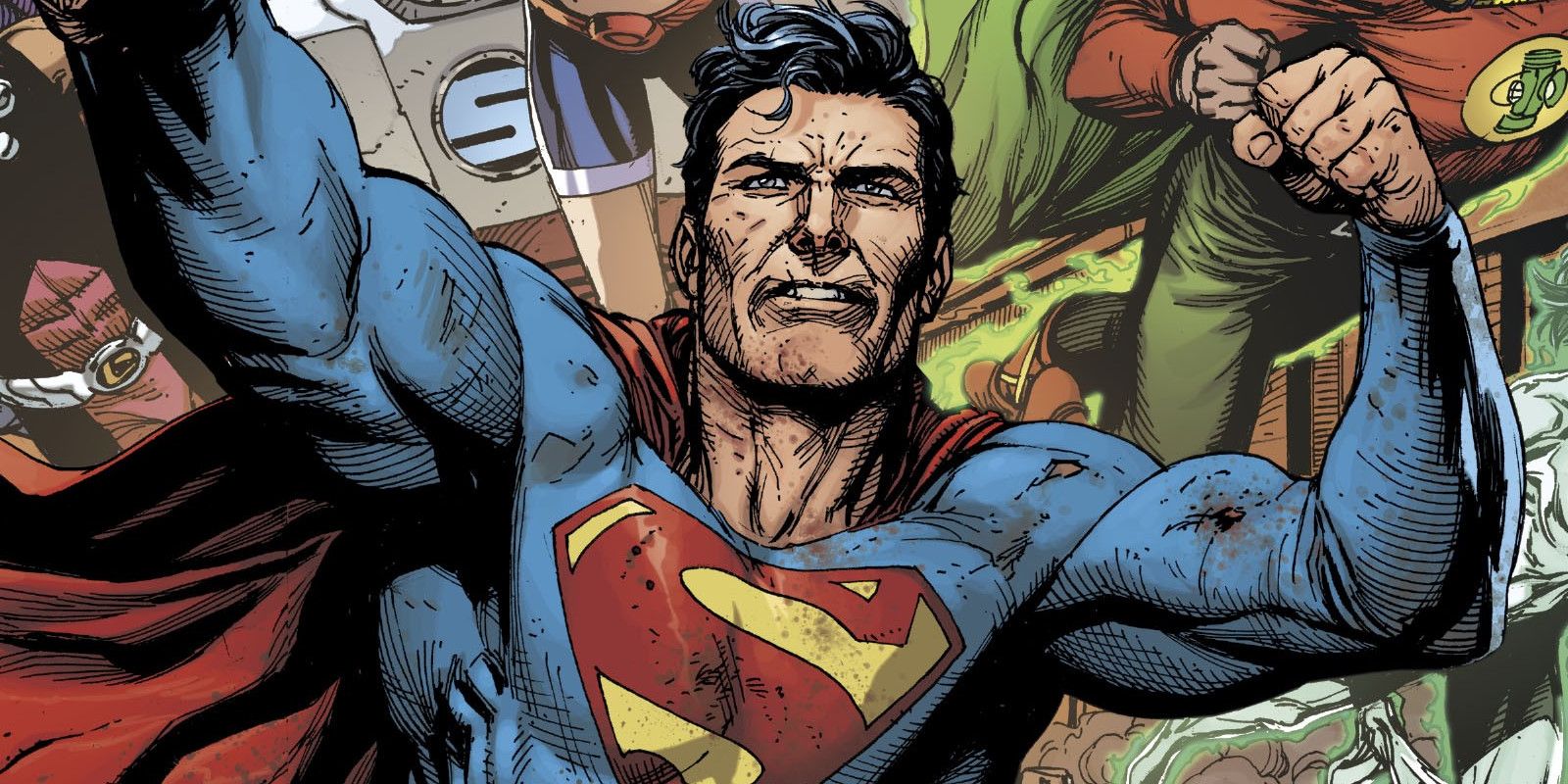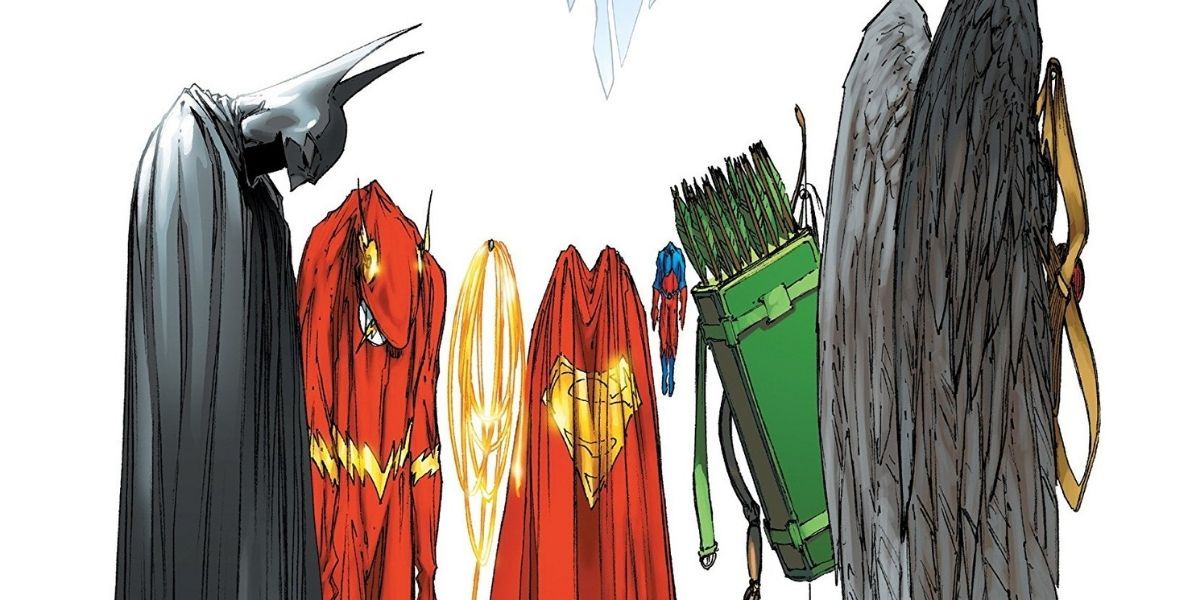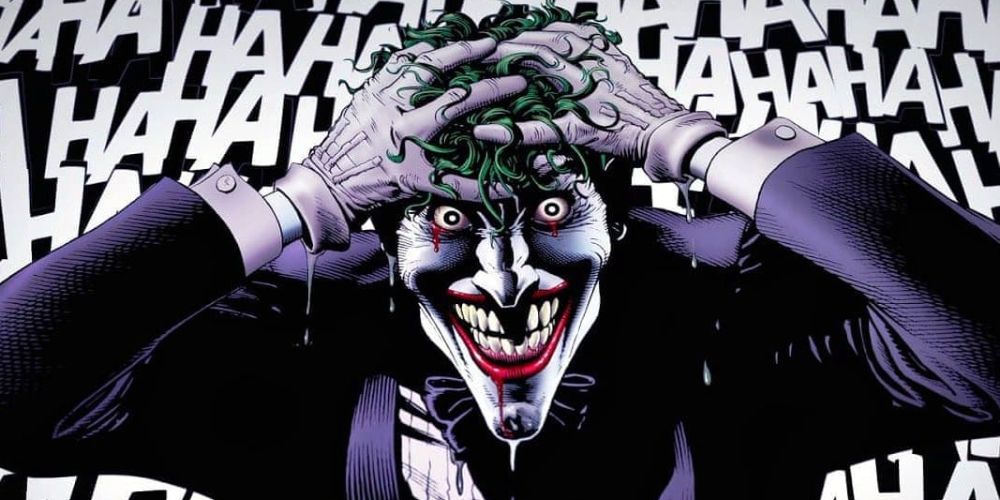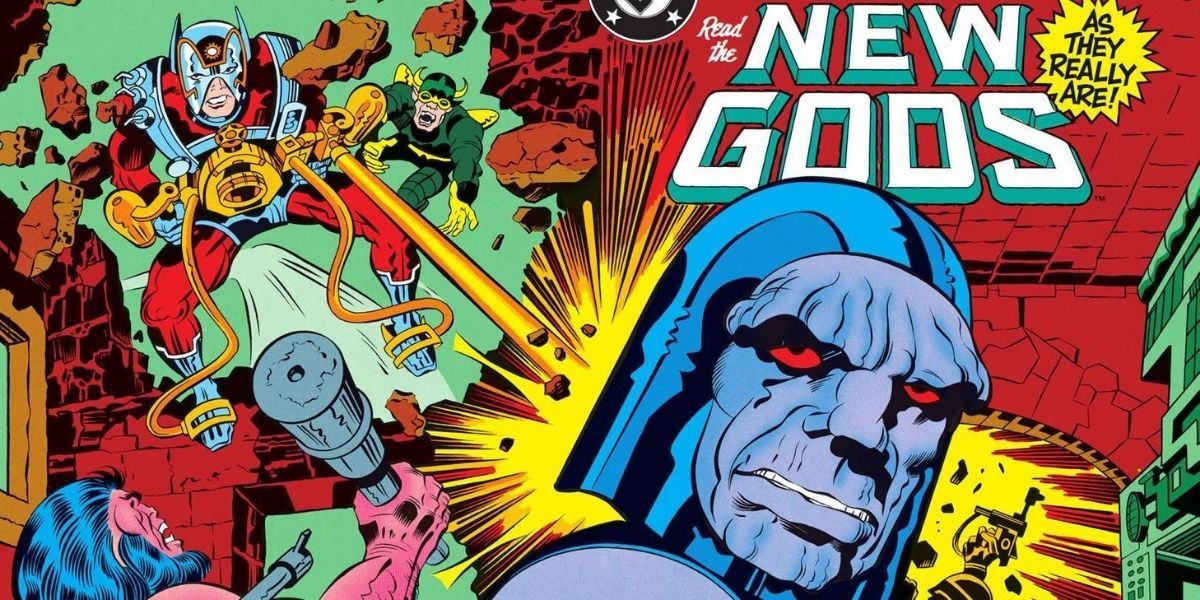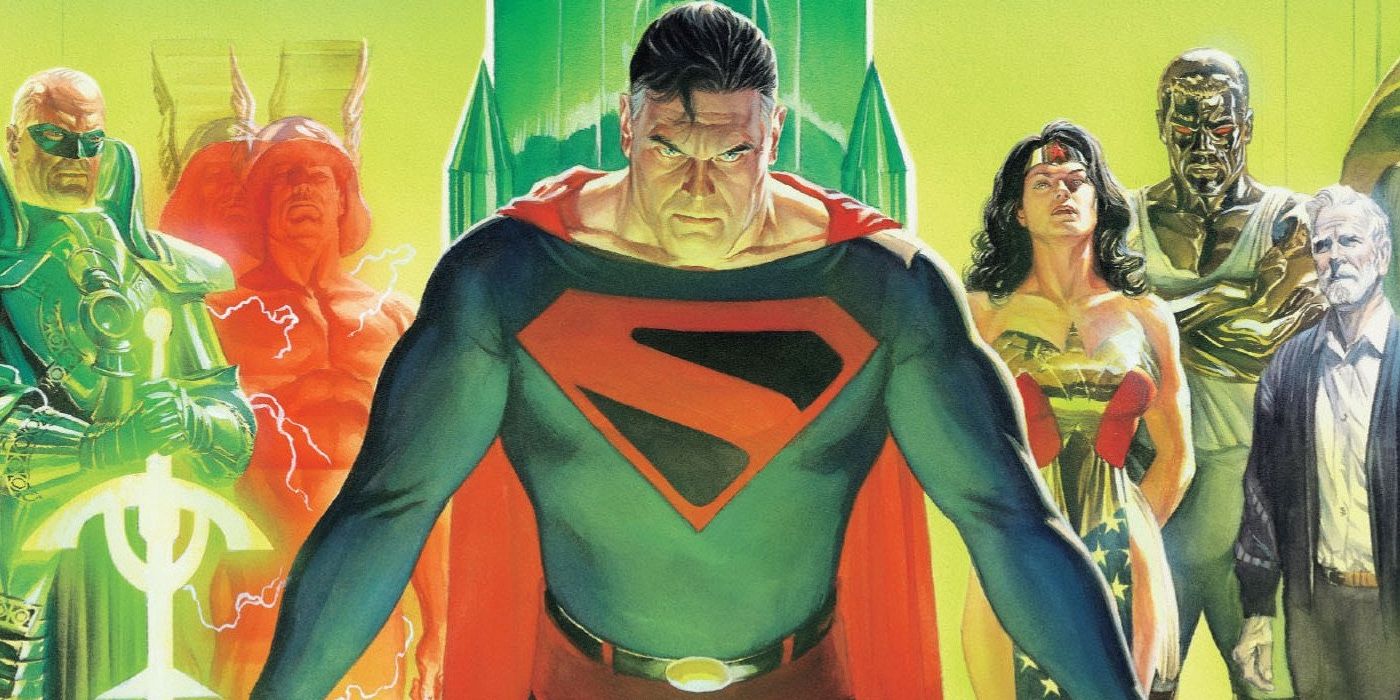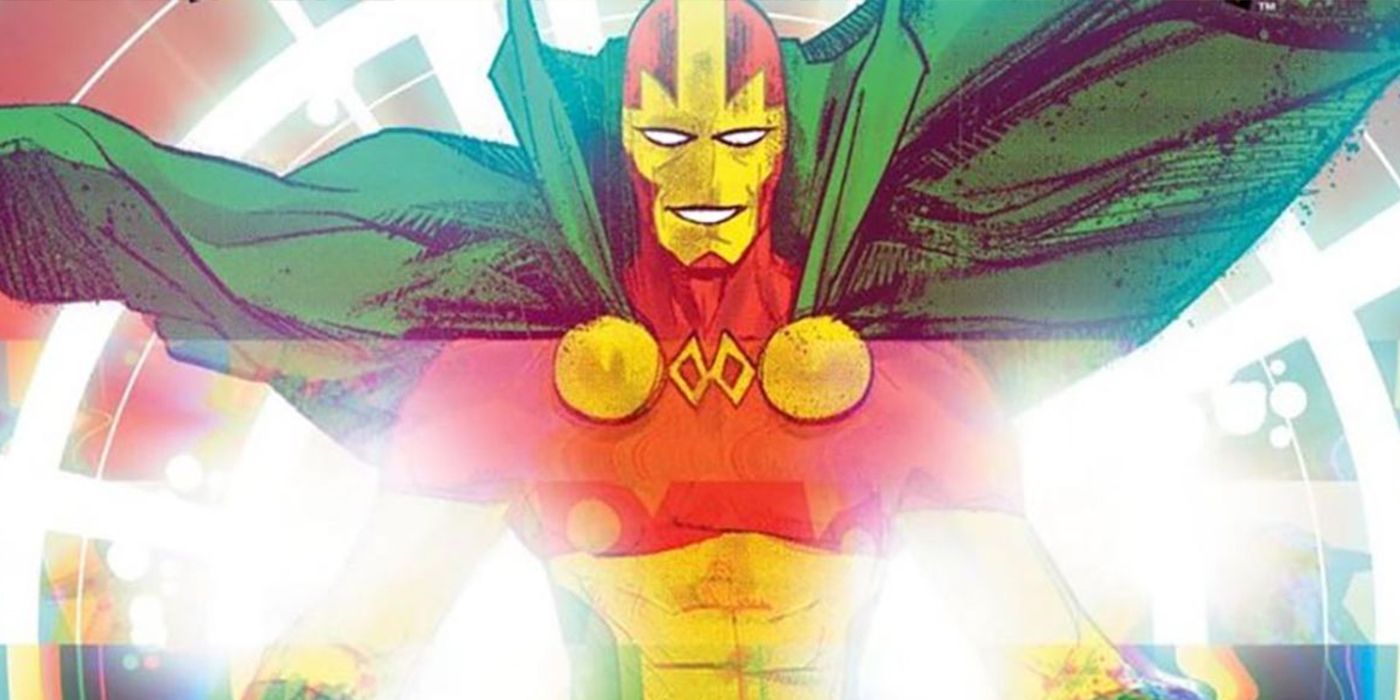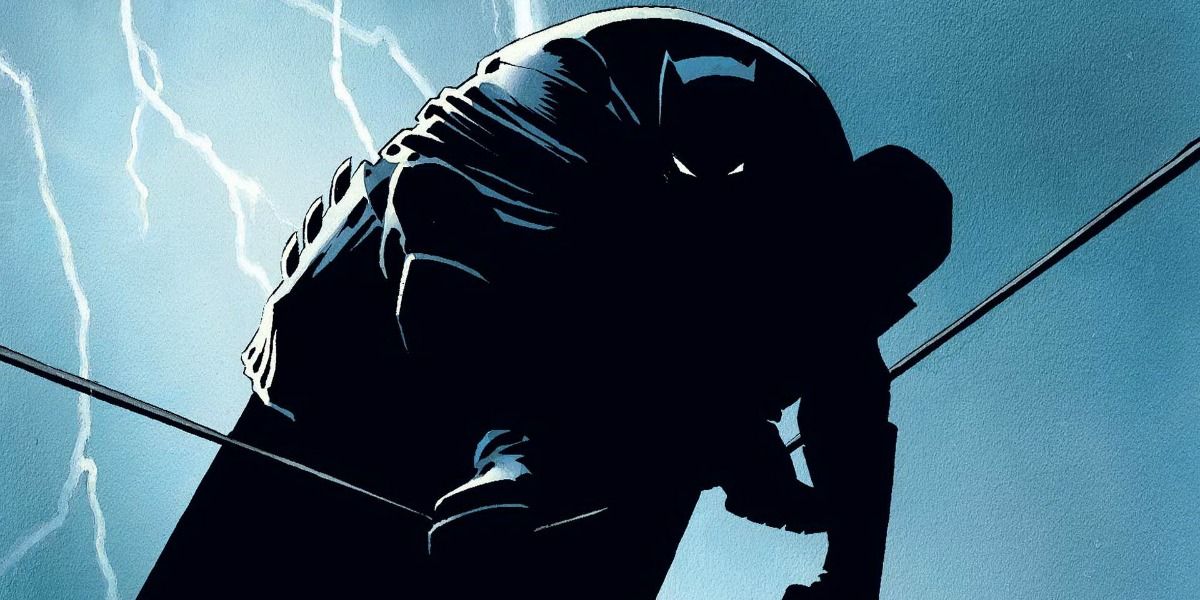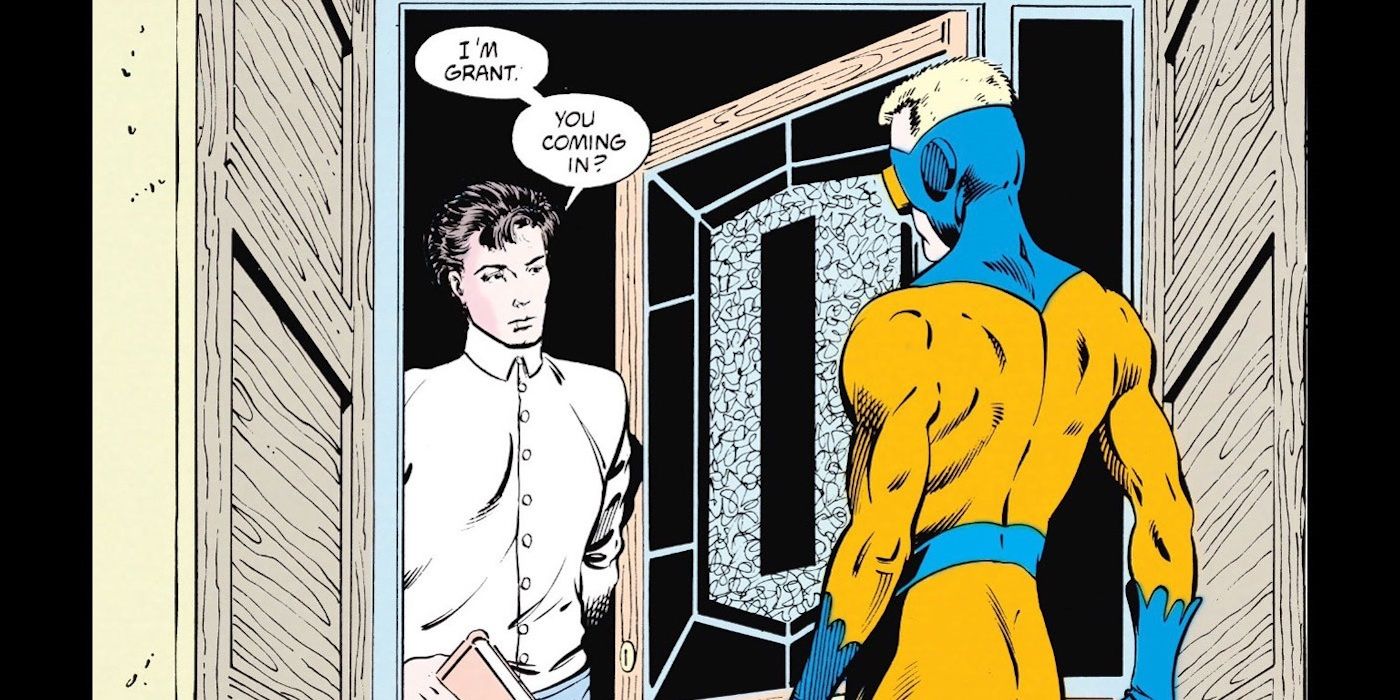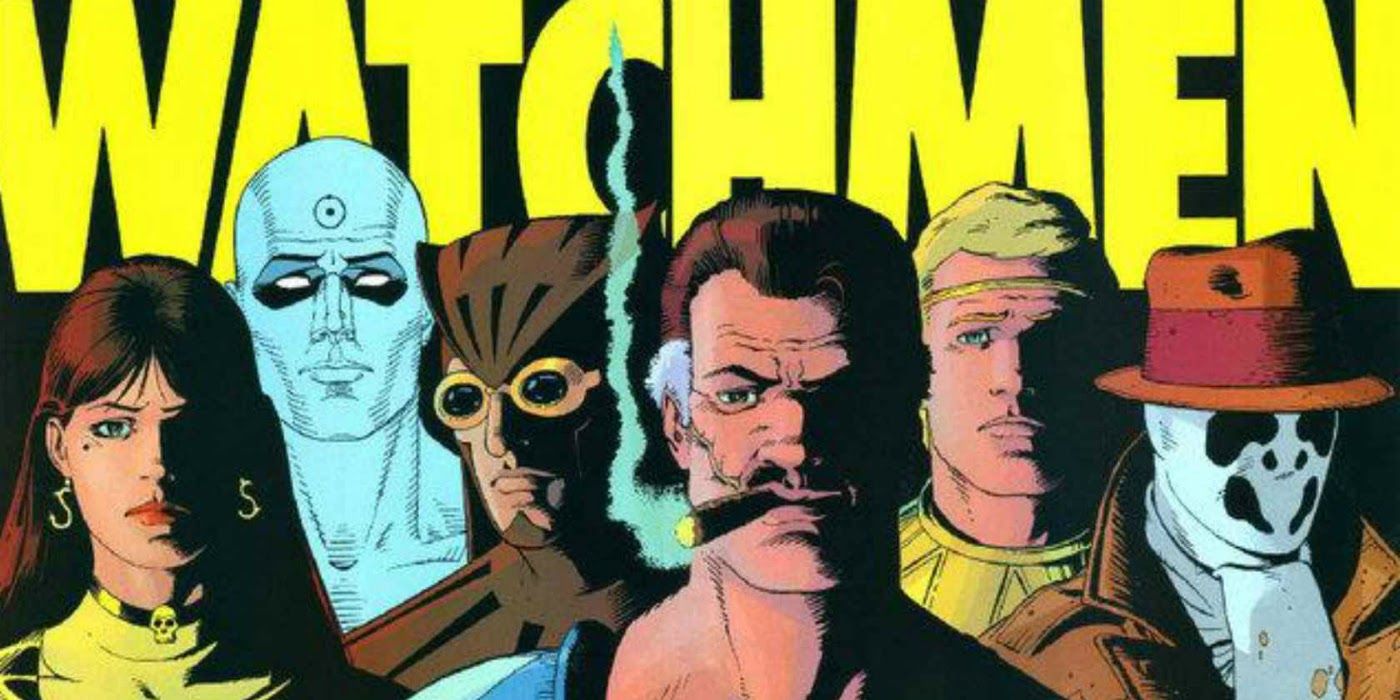Content Warning: This article contains mention of suicide.
As one of the oldest and most venerated publishers in the comics industry, DC has witnessed and partaken in all of the major artistic trends and shifts, even driving several movements in comics literature through the publication of many of the most daring, experimental, and unconventional graphic novels in recent decades.
Their acclaimed titles in the 80s alone produced by such giants as Alan Moore, Frank Miller, Grant Morrison, and Jack Kirby, just to name a few, redefined what could be done using the comics form and have stood the test of time as some of the most influential graphic novels ever published. Constantly reimagining the medium and finding new ways to use its boundless potential, DC and the creative talent they employ have set the bar for the rest of the industry by breaking new ground wherever they can, most importantly in their slate of distinguished graphic novels.
Justice
The only full-length maxiseries produced for DC by the inimitable Alex Ross, Justice charts new territory for the publisher in nearly every way. Opening with a harrowing and emotional apocalyptic vision of the world's greatest superheroes failing utterly to prevent nuclear armageddon, the comic then moves to a searing indictment levied against the Justice League by none other than the world's most prominent supervillains, asking one of the hardest questions that DC's heroes have ever been asked: why haven't you used your powers to enact real change? To solve world hunger? To prevent the spread of diseases? To end nuclear proliferation?
Justice tells a sweeping, captivating story that pushes the heroes of the Justice League to their limits and redefines the phrase "epic scope" through its immense, larger-than-life paintings and astonishing full-page compositions.
Doomsday Clock
Conceived as a tie-in to or an apology for DC's Rebirth event, Doomsday Clock manages to achieve the unimaginable: crafting a compelling, original, and worthy sequel to what is perhaps the single most acclaimed comic of all time–Watchmen. Geoff Johns honors Moore's brazenly pioneering spirit by pushing the story into metafictional territory very rarely explored in mainstream DC canon, handling iconic characters such as Dr. Manhattan with grace and creativity, allowing them to develop and evolve within the broader context of the DC Universe.
Doomsday Clock represents one of the most artful and meticulous acts of pastiche ever crafted for the comics medium, replicating the look, texture, and structure of Watchmen down to the last detail–epigraphs used to conclude issues, specific panel layouts, non-linear narrative, multimedia primary source documents, etc.–all the while pushing the book in new and interesting directions.
Identity Crisis
One of the first DC graphic novels to recruit a high-profile prose author for its scripting–Brad Meltzer–Identity Crisis is singularly unique among other DC events precisely because of the fresh perspective Meltzer brings to the table. Operating on the central premise of a "whodunnit" story, Meltzer makes the bold decision to center the narrative around B-List heroes and their families (most significantly Ralph and Sue Dibny) in order to explore the family dynamic and personal cost of being a superhero.
The most spectacular feature of this novel is the genuine intimacy with which it treats superheroic characters, providing the reader a peek behind the curtain at the human impact of superhuman life, shining a light on the ordinary people who live with and love the men and women behind the masks.
The Killing Joke
The Killing Joke was born amidst a series of other genre and medium-defining works from around the same period–The Dark Knight Returns, Batman: Year One, Arkham Asylum: Serious House on Serious Earth–and holds a place among its contemporaries as one of the most influential Batman and DC stories for both the pedigree of the talent that produced it and the unique format of its publication.
Alan Moore and Brian Bolland's wonderfully sadistic tale of the Joker and Batman's fatal attraction constitutes a form all its own; published as a one-shot, prestige format comic, it serves as one of the purest examples of a true "graphic novel" to come out of that era–self-contained, artist-driven, and never seeing serial publication. The book has had an immense impact on creative talent both within and without the comics industry, with notable figures such as legendary Batman artist Tim Sale and award-winning director Tim Burton citing The Killing Joke as an inspiration for their work.
New Gods
The crowning jewel of Jack Kirby's Fourth World saga, New Gods represents one of the earliest examples of extensive creative control given to an author within the DC publishing system–Kirby at this point in his career was able to take full direction of his work (at least for a time), producing this epic saga of warring deities which he developed, scripted, and penciled himself. Fans and critics alike herald New Gods as the artistic high-point of Kirby's already distinguished career, and it is recognized universally as some of the finest comics art ever published. In New Gods Kirby develops a complex mythology all his own, steeped in religious tradition and heady philosophical concerns, raising questions about the human condition and the reality and cost of warfare.
Kirby also forever changed the face of the comics industry with New Gods by proposing to DC that it and his other Fourth World titles be published in a square-bound, collected format–and while DC didn't acquiesce to his requests for these works, they would eventually implement the new, proposed publication format and introduce the now-ubiquitous trade paperback, changing the face of the industry forever.
Kingdom Come
Marking the first major work for DC illustrated by legendary comics artist Alex Ross, Kingdom Come presents a vision of the DC Universe several decades in the future, with many of the flagship superheroes aging or retired and the world dominated by a violent, irresponsible new generation of metahumans. Ross' remarkable paintings alone are enough to merit Kingdom Come a place among the most outstanding graphic novels published by DC, but its brilliant story courtesy of Mark Waid is what solidifies that position.
Waid stops to consider what mutually beneficial superhuman intervention into human affairs should look like, grounding his tale in down-to-earth human morality by narrating it through the eyes of an elderly minister, Norman McCay, guided through the events of the plot by God's angel of vengeance: The Spectre. McCay becomes a proxy for the reader, a point of identification through which to encounter the world of the superheroic and see it, in all its madness, for what it is.
Mister Miracle
Mister Miracle blazes its own path within the canon of mainstream superhero comics, marking one of DC's most adventurous and daring publications in years. The content of the book is challenging, controversial, and relevant–adult in a manner that means more than just sex, drugs, and violence. With a graphic, full two-page splash depicting the title character attempting suicide occupying one of the opening pages of the very first issue, it's clear from the start that Tom King and Mitch Gerads are telling a superhero story wildly different from those to be found in DC's flagship ongoing series.
Together, the author/artist team deliver a heartfelt and gripping personal drama that takes the most outrageously fantastic and deific characters ever dreamt up by DC comics–Mister Miracle and the New Gods–and uses them to explore painfully human, mundane issues of everyday life, all while pushing the boundaries of graphic expression and comics language to the bleeding edge of contemporary style.
The Dark Knight Returns
It's hard to overstate the importance and influence of Frank Miller's seminal Batman tale in terms of the sheer impact it's had on the character and his place in the broader cultural consciousness. The Dark Knight Returns is the literary "missing link" between the kitsch, camp Batman of the gold and silver ages and the contemporary edgy, noir Batman with whom so many fans are familiar. Miller takes Batman into new and unfamiliar territory: gangs of mutants wearing neo-nazi tattoos and fetish gear, brutal combat tactics targeted at police officers, a murderous streak that surfaces in his confrontation with the Joker, and a slightly unnerving nihilist ideology explicated during the iconic Superman fight.
Frank Miller's unmistakable, expressive art style completely reimagines some of DC's most recognizable characters, altering and adjusting their appearances in ways that have inspired costume designers, pencilers, inkers, and colorists across every medium, and his warped, aggressive vision of the Caped Crusader as a terrifying, vengeful force of nature set the tone for Batman writers for decades to come.
Animal Man
Recently re-released in a deluxe edition through DC's Black Label, Grant Morrison's revival of the campy silver age B-lister stands as perhaps the single most experimental comic ever published by DC, and one of the most iconic, intelligent metafictional comics ever written. Tackling headlong the zany, nonsensical nature of DC's continuity (or lack thereof), Morrison uses Buddy Baker and his misadventures to question the role that violent, fantastic fiction plays in the everyday life of its readers by casting himself in the role of the villain.
Morrison tells a truly jaw-dropping postmodern tale that sees its protagonist embark on a journey to confront his maker and bring him to bear for the injustices wrought upon fictional characters purely for the enjoyment of readers, leading to the utterly groundbreaking and notorious cover of the final issue, featuring a photograph of Morrison sitting in a chair at his desk and stomping on an illustrated Animal Man.
Watchmen
The only graphic novel named to Time Magazine's "100 Best English-Language Novels of the 20th Century", Alan Moore and Dave Gibbons' Watchmen has reigned as the undisputed masterpiece of the comics medium for almost 35 years. Commonly cited–perhaps erroneously–as the first comic to do away with "thought bubbles" and other forms of redundant or amateurish narration, Watchmen, regardless, pushed the envelope of what was possible in terms of both content and form, confronting issues of sexuality, politics, ethics, metaphysics, and superhero deconstructionism using truly groundbreaking and unconventional narrative structures.
Its characters have taken the cultural landscape by storm and remain pertinent and influential in both pop culture and literature to this day–spawning adaptations, sequels, and spinoffs in every medium–and providing proof positive of the lasting impact of this megalithic novel.

